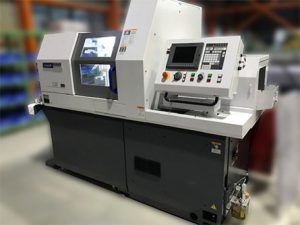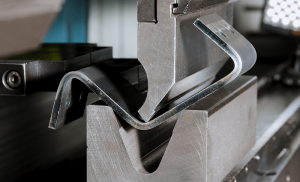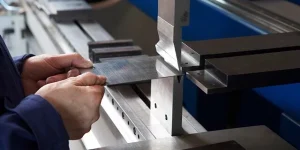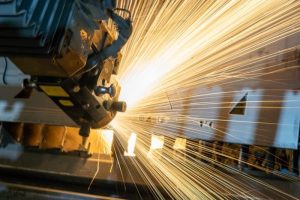CNC machining offers superior precision, enhanced speed, and increased safety, reducing human error and labor costs significantly compared to manual controls
Precision and Accuracy
CNC machining is a method of mechanical production, during which a computer program deciphers codes and controls the movement of the tool. Most often, it is used with metal and plastic production, although the method can be applied for other materials as well. The method uses optimized tools and production strategy, as a result of which the accuracy and efficiency are higher compared to manual machining. This accuracy can boast precision at 0.0001 inches, which is several times better than the performance of any even the most skilled worker.. However, the most significant factor that distinguishes CNC machining from any other approach is the precision it offers. CNC machining is used in industries where any deviation of a product can end in a massive failed operation or fatalities. Perhaps, the best two examples of such industries are aviation and the production of medical equipment, where each detail has to be placed with absolute precision.
Needless Precision Due to Digital Control
The precision of CNC machining comes from the fact that the machine that produces a product is controlled by a computer. This means that only a programmed command can operate the machine. There is no inconsistency or difference in precision that comes from a manual control of the machine. First and foremost, CNC machining allows controlling the tool up to the fraction of inches. Secondly, the machine will never be wrong because once programmed, it will implement the exact same set of operations to produce as many products as needed. This feature is especially important for chain productions, where absolutely each product has to be as identical as it is produced by CNC at the same time. For instance, in the automotive industry, CAM-produced engine pliers have to be 100 percent identical to each other to be successfully assembled in the engine of a new automobile.
Reduced Error Rate
With manual machines, there is always a risk of an operator misreading a drawing, stealing badly the instrument, and so on. With CNC, there are very few areas where people are involved, and it reduces a lot the risk of an error. As a result, it is also almost no waste during the production cycle, and products do not need to be improved because of a production error.
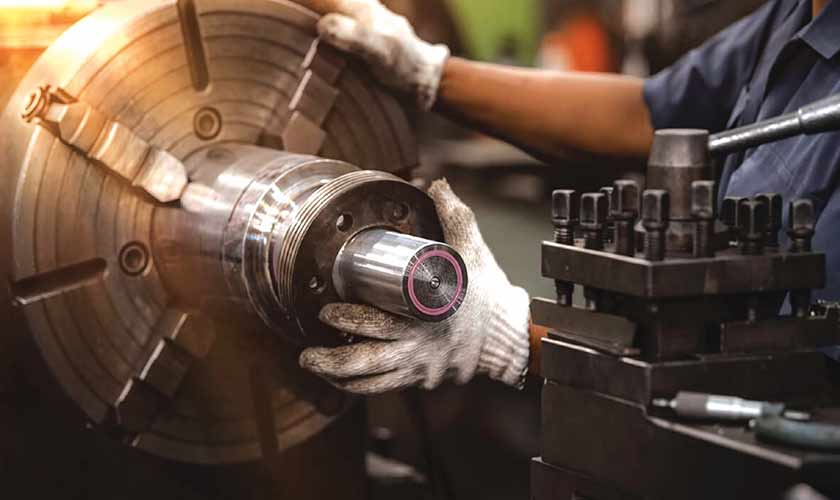
Efficiency and Speed
CNC Machining has a critical application in industries that are focused on high output and precision, as it allows for improved efficiency and speed in production. The automated nature of the process facilitates the rapid production of parts and components without reducing the quality of the production, which translates to notable improvements in several aspects or production.
Consistent Operation and Reduced Downtime
Moreover, CNC machines enable consistent operation throughout the day, with no increments, breaks or shifts that human operators of manual machines require. This is important in industries such as the automotive and aerospace, where the production demand is high and the delivery deadlines are stringent. In the automotive industry, CNC equipment is often used to produce complex components that are vital for modern vehicles and produced in large numbers, boosting the overall production rate.
Single Setup for Multiple Processes
Another advantage of CNC machines is their capability to automate diverse machining processes with the same single setup, for example, being able to first cut the necessary materials and then drill new holes and finally mill them. Typically, the latter would require manual retooling and alignment and often steps can be as much as several days apart, which is greatly automated by the CNC machines.
Speed of Execution
One of the key advantages of CNC machining is the actual speed of the execution of the commands. The level of detail that comes with designing a precise machine code allows for the CNC to execute incredibly intricate work at speeds that a manual operator could not possibly hope to achieve. This is not only facilitated by the speed of the equipment or the tools but also by the precision with which certain patterns and designs can be executed by the machines, ensuring an equally rapid execution of the instructions. Typically, a manual counterpart to a CNC machine that can finish work in several hours will complete the same process in a fraction of the time, often minutes.
Automation of Repetitive Tasks
Another application of CNC machining that facilitates the efficiency and maintenance of speed of the process is the automation of production of replicas or tools. The process of production is largely automated and results in perfectly identical copies of the same part with only one or a few prototypes made, which ensures a complete absence of variability in the work produced. At the same time, in larger operations, the consistency is hard to ensure by human workers, who are unlikely to be able to operate with the necessart consistency day in and day out.
Versatility and Flexibility
CNC machining is one of the most advantageous methods due to its high versatility and flexibility. Currently, there is hardly any area where this capacity is not required; therefore, many industrial niches such as aerospace and custom electronics heavily rely on using diverse CNC tools for their distinctive needs. In this work, several basic advantages of using CNC systems are going to be considered.
Materials
CNC systems are used for diverse materials and are not restricted in their capacity to work with most available. Metals, plastics, wood, and composites can all be scheduled as likely operations on the majority of CNC tools. Moreover, the program and preparation for cutting are similar whether a machinist wants to process a block of aerospace-grade aluminum or a piece of wood to be used later in creating exclusive furniture. Thus, using CNC machinery, the same equipment can be used for a variety of tasks, making manufacturing more efficient.
Complex designs
Most often, CNC is much more efficient than manual machining when it comes to the implementation of design intentions: while an artisan will not cope with some intricate form frequent in such types of activity as biomedical engineering, the design developed using 3D MAX, CorelDRAW or other CAD will easily be cut by the CNC system. Hence, CNC machining is beneficial because it allows to provide processing of any assigned tasks with the highest precision that the machine is capable of doing, while manual production cannot ensure the constant necessary precision.
Quick changes in production routines
Finally, CNC machines could be changed from producing one product to that of another within a few minutes. The advantage of this in his situation is vital, as there is much time-saving, and a single CNC machine becomes more flexible for manufacturing purposes. Since it takes manufacturers much longer to produce a CNC program, time is not wasted while the system is being prepared for the production of the new product, which significantly facilitates the manufacturing scale. The rapid changes in developing quick production have many advantages, such as the much shorter downtime between experience gained, and added flexibility.
Safety and Reduced Labor
There are several ways in which CNC machining enhances safety and reduces labor in manufacturing and industrial environments. Safety and labor are two of the most critical concerns for industrial operations, and the use of CNC machines impacts both workers and management. While the following effects are generally positive for their respective reasons, they are all related to the automation of most industrial processes and the precision that CNC systems provide.
Safety Concerns Negated
A significant amount of the danger associated with machining comes from the actual moving tools and sharp elements of an active tool. When machining is done manually, there is a high risk of cuts or amputations, as machinists are physically close to the action. With the use of CNC, however, the machining is done from a computer console, with no direct physical handling of the machines. For example, a report from the previous year showed that manual machining shops saw a reduction of around 70% in operator injuries after transitioning to CNC machining. The automation of the process means that the machinists are not handling potentially dangerous tools when they are on.
Reduced Physical Strain
Another benefit of CNC machining is related to the relative ease of automated work for the operator. Manual machining can be taxing and require long hours of physically intensive work with repetitive movements. In comparison, CNC machining requires some programming expertise but is a mostly sedentary occupation, with the operators mostly observing and monitoring the process. There is less of a physical strain on the person, who is much less likely to be required to spend hours repeating movements and risking carpal tunnel or other musculoskeletal issues that manual machinists frequently encounter.
Fewer Labor Costs
While CNC machines require skilled operators to program their work, there is much less skilled labor required on the shop floor than is necessary for manual operations. The result for the company is a need for fewer well-paid employees in general, as CNC technology makes it possible to automate many specific complex tasks that are usually additional and performed by highly-paid machinists. One report from last year showed a potential skill personnel reduction for CNC manufacturing facilities of up to 50%, with their lower wages reducing overall operational costs and somewhat ameliorating the shortages in skilled labor that a great deal of manufacturers are experiencing in the modern day.
Increased Productivity
Finally, a hidden benefit of using CNC machines is that, since they provide the exact same specification for every piece, the end result is always of the same quality. This lets the company devote more of its human resources to other areas of production, management, or marketing, as the workers no longer need to spend an equal amount of time supervising the production of tools and ensuring their quality. It is worth noting that today, with the added adaptability of CNC programming, the ability to quickly teach a CNC operator how to run different types of CNC machine makes for a more nebulous picture. However, the above factors remain largely relevant as advantages offered by the use of CNC technology.
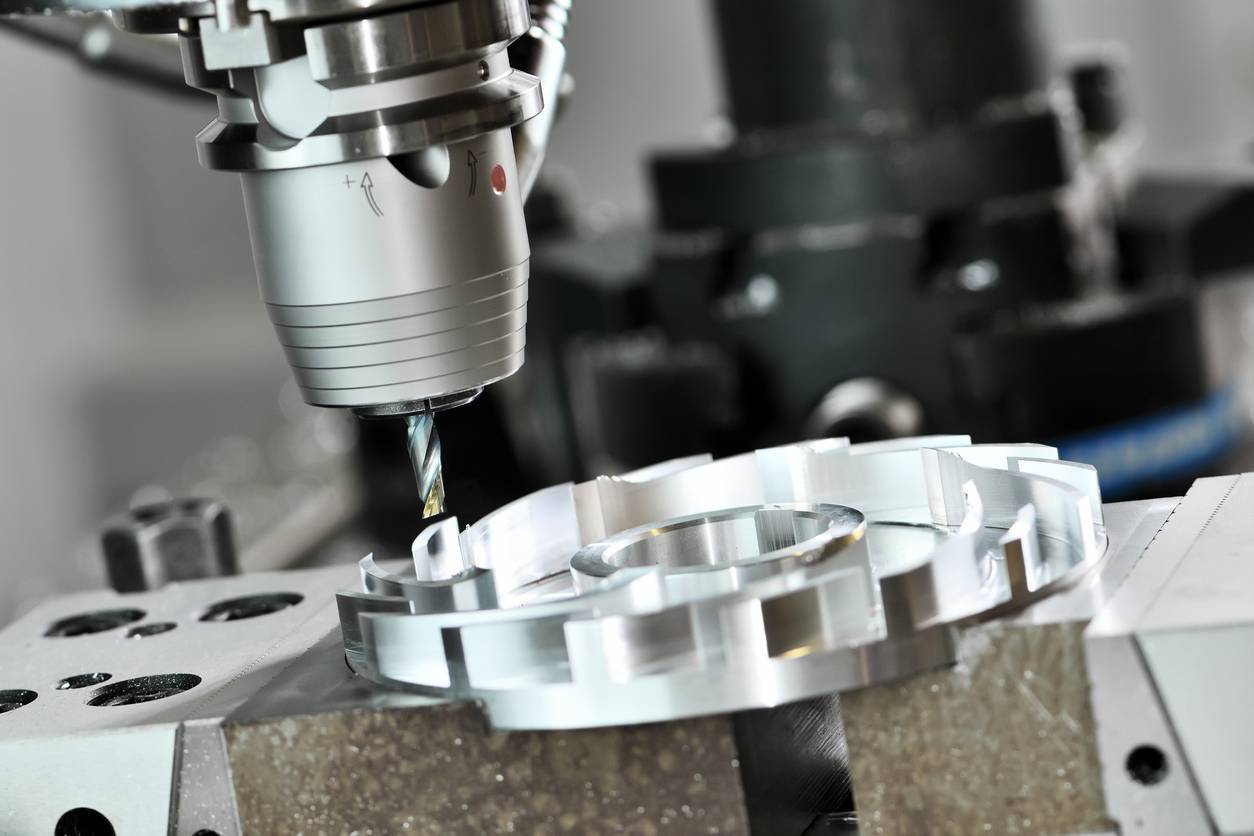
Cost Effectiveness Over Time
Cost savings over the long term is one of the key benefits that make CNC machining so appealing compared to manual controls. This cost-effectiveness is achieved due to the increased efficiency, reduced waste, lower labor costs, and fewer mistakes, making CNC a cost-effective choice for manufacturers that seek sustainability and profitability.
Reduced Waste and Material Efficiency
Material waste is greatly reduced with CNC machining compared with manual machining. The machines use precise calculations of the required materials for each part, cutting the paths in such a manner that very little waste is to be discarded. For example, in fields such as automotive and aerospace, material is a significant portion of production costs. The waste is reportedly reduced by 20%, which is a significant improvement in terms of over large volumes of production.
Lower Labor Costs
As was mentioned before, the process is automated. This means that the need for manual input is reduced. While the initial cost of a CNC machine is much higher than that of a regular one, the price of an additional machinist is much higher. In a normal operation, multiple, possibly even hundreds of machinists would have to run different machines around the clock. Conversely, to run the same machine, a single computer technician is required. Companies report an average of 30% reduction of labor costs, affiliated with running CNC systems.
Decreased Downtime
CNC machines can run constantly since they do not need shifts or breaks that a human operator would inevitably require. This ability ensures that the machines have much higher productivity rates. Additionally, the machines are able to operate almost continuously without breaks. The need for repairs and maintenance is low because of the precise operations that do not result in wearing of parts. Increased productivity, combined with reduced maintenance, makes the process far more efficient as the downtime is virtually absent.
Higher Quality and Fewer Mistakes
The process is highly precise, on top of being efficient. This ensures the quality and uniformity of the products, which greatly reduces the costs that are affiliated with defects and production of scrap material found in manual machining. Furthermore, the machines all function in the same manner and are programmed to have the same error margin. As a result, the machines are significantly less likely to make a mistake, something that is a crucial issue for a manual operation. Reduced defects mean that the brands avoid the issue of tainted reputations. The mistake could be significantly costly in households that resort to acquiring a regular machine. The machines are far more efficient in terms of precision since they do not depend on the human operator.
Scalability
CNC machines can be much more easily expanded in terms of quantity and volume without a corresponding increase in costs. Once established, the machine can run for longer periods or be used in greater quantity to increase the output.





